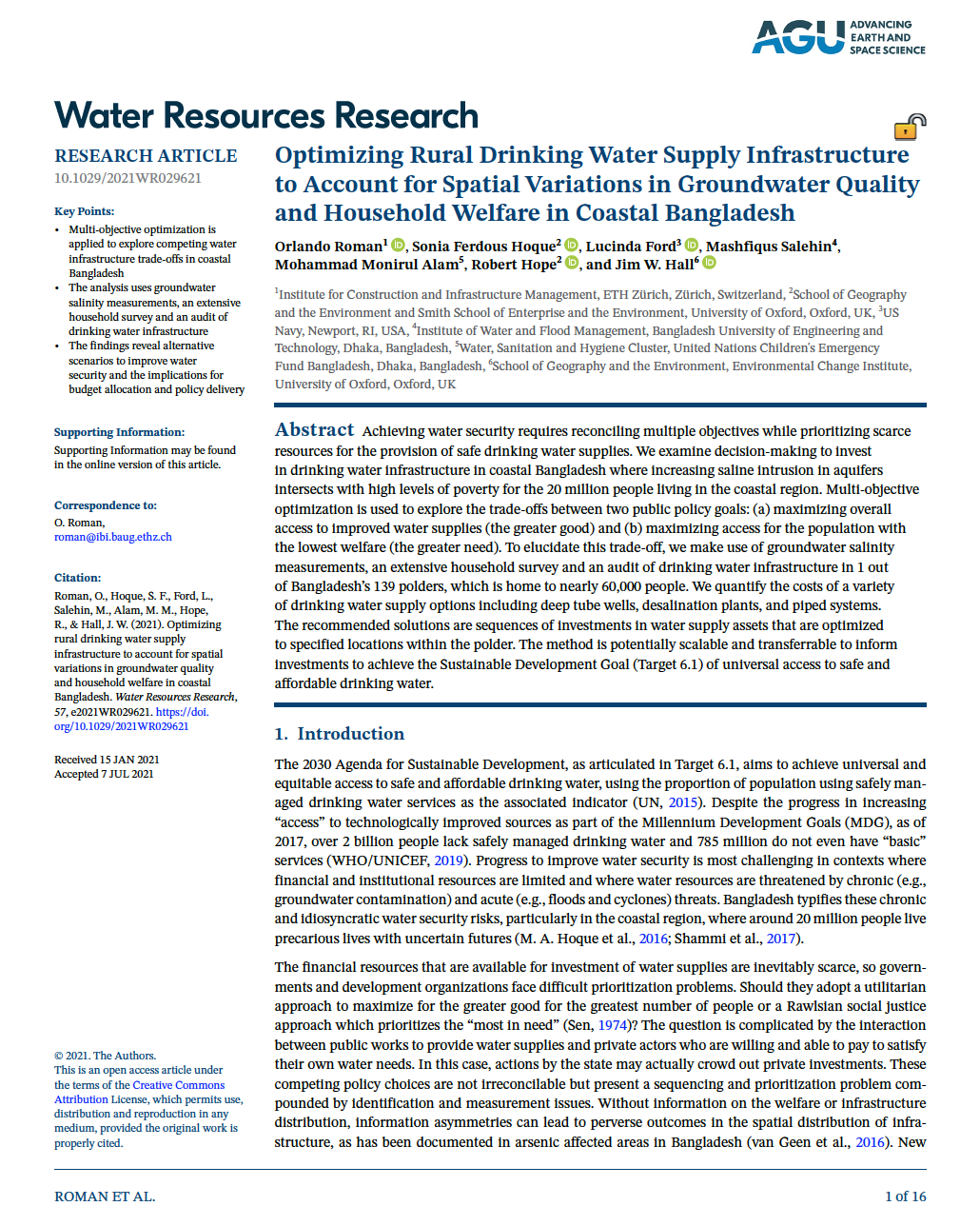Authors: Orlando Roman, Sonia Ferdous Hoque, Lucinda Ford, Mashfiqus Salehin, Mohammad Monirul Alam, Robert Hope, and Jim W. Hall
Achieving water security requires reconciling multiple objectives while prioritizing scarce resources for the provision of safe drinking water supplies. This study examines decision-making to invest in drinking water infrastructure in coastal Bangladesh where increasing saline intrusion in aquifers intersects with high levels of poverty for the 20 million people living in the coastal region. Multi-objective optimization is used to explore the trade-offs between two public policy goals: (a) maximizing overall access to improved water supplies (the greater good) and (b) maximizing access for the population with the lowest welfare (the greater need).
The recommended solutions are sequences of investments in water supply assets that are optimized to specified locations within the polder. The method is potentially scalable and transferrable to inform investments to achieve the Sustainable Development Goal (Target 6.1) of universal access to safe and affordable drinking water

